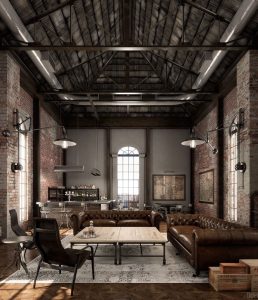In the ever-evolving world of interior design, staying updated with the latest trends can be both exciting and challenging. Our homes are our sanctuaries, and the decor we choose reflects our personalities, lifestyles, and the times we live in. Whether you’re planning a complete makeover or just looking to refresh your space, understanding what’s in and what’s out in home decor can help you make informed decisions. This article will explore the latest interior design trends, offering practical tips and advice to help you create a stylish and contemporary living environment.
What’s In: Embracing Modern Trends
1. Sustainable and Eco-Friendly Materials
Sustainability is not just a trend; it’s a movement that’s transforming interior design. As awareness of environmental issues grows, more people are opting for eco-friendly materials in their homes. This includes furniture made from reclaimed wood, organic fabrics, and non-toxic paints. These materials not only reduce your environmental footprint but also add a unique charm to your home.
Tip: Start small by incorporating bamboo or recycled glass accents. Look for furniture brands that prioritize sustainability and have certifications like FSC (Forest Stewardship Council) or GREENGUARD.
2. Biophilic Design
Biophilic design is all about bringing the outdoors in. This trend focuses on creating a natural and serene environment by incorporating plants, natural light, and natural materials like wood and stone. It’s proven to reduce stress and improve overall well-being.
Tip: Add a variety of indoor plants to different rooms, use large windows to let in natural light, and incorporate water features like a small indoor fountain to enhance the biophilic feel.
3. Bold Colors and Patterns
Gone are the days of sterile, all-white interiors. Bold colors and patterns are making a comeback, adding personality and vibrancy to spaces. Think jewel tones, deep greens, and rich blues, along with geometric patterns and textured wallpapers.
Tip: If you’re hesitant to go all-in with bold colors, start with accent walls or statement pieces like a vibrant sofa or patterned rug. Mix and match patterns in a cohesive color scheme to avoid overwhelming the space.
4. Maximalism
Maximalism is the antithesis of minimalism, celebrating abundance and eclecticism. This trend encourages layering different styles, textures, and colors to create a rich, curated look. It’s about expressing individuality and showcasing unique pieces.
Tip: Embrace maximalism by displaying collections, layering rugs, and mixing different furniture styles. The key is to strike a balance to ensure the space feels curated rather than cluttered.
5. Smart Home Integration
Technology continues to influence home design with smart home integration becoming increasingly popular. From automated lighting and climate control to smart appliances and security systems, incorporating technology can enhance convenience and efficiency.
Tip: Start with a smart speaker or thermostat and gradually build a connected ecosystem that suits your lifestyle. Consider integrating smart lighting that can be controlled via an app or voice command for added convenience.
What’s Out: Moving Away from Outdated Trends
1. Fast Furniture
Fast furniture, characterized by its low cost and disposability, is falling out of favor as sustainability becomes a priority. These pieces are often made from low-quality materials and contribute to landfill waste.
Solution: Invest in quality, timeless pieces that will last longer and can be refurbished or repurposed. Look for second-hand or vintage furniture that adds character and reduces environmental impact.
2. All-White Kitchens
While all-white kitchens have been a staple for years, they’re starting to feel cold and impersonal. Homeowners are now favoring kitchens with more color, texture, and warmth.
Solution: Introduce color through cabinetry, backsplashes, or countertops. Consider materials like wood or stone to add texture and warmth to the space.
3. Open Shelving
Open shelving can look beautiful in magazine spreads, but in reality, it often leads to clutter and requires constant upkeep. As people seek more practical and organized spaces, closed storage solutions are becoming more popular.
Solution: Use a mix of open and closed storage to balance aesthetics and functionality. Display only your most attractive items on open shelves and keep everyday items stored away.
4. Industrial Style
The industrial style, with its exposed brick, metal pipes, and utilitarian look, is gradually being replaced by softer, more comfortable designs. People are seeking cozier, more inviting interiors.
Solution: Transition from industrial to a more eclectic or bohemian style by adding textiles, warm colors, and softer furnishings. Incorporate natural materials to create a more inviting atmosphere.
5. Minimalism
While minimalism isn’t entirely out, its stark, often cold interpretation is being replaced by more personalized and warmer approaches. People are now more inclined towards spaces that reflect their individuality and feel lived-in.
Solution: Keep minimalism’s core principles of decluttering and simplicity, but add personal touches, textures, and colors to make the space feel more inviting.
Step-by-Step Guide: Updating Your Home Decor
Updating your home decor can seem daunting, but with a strategic approach, you can achieve a stunning transformation. Here’s a step-by-step guide to help you incorporate the latest trends while phasing out outdated ones.
Step 1: Assess Your Space
Take a thorough look at your current decor. Identify what you love and what feels outdated. Make a list of items to keep, donate, or repurpose.
Step 2: Set a Budget
Determine how much you’re willing to spend. Prioritize areas or pieces that will make the most significant impact. Remember, you don’t have to change everything at once.
Step 3: Research and Plan
Look for inspiration online, in magazines, or on social media. Create a mood board to visualize your ideas and ensure everything works together harmoniously.
Step 4: Start with Key Pieces
Invest in a few key pieces that set the tone for your new decor. This could be a statement sofa, a bold area rug, or new cabinetry in the kitchen.
Step 5: Add Accents and Accessories
Incorporate smaller items like throw pillows, artwork, and plants to enhance the overall look. These can be easily updated over time as trends change.
Step 6: Incorporate Technology
Integrate smart home devices gradually, starting with the most beneficial for your lifestyle. This could be a smart thermostat, lighting system, or security feature.
Step 7: Personalize Your Space
Add personal touches that reflect your personality and experiences. This could be family photos, travel souvenirs, or handmade crafts.
Step 8: Maintain and Evolve
Regularly update your decor to keep it fresh and reflective of your current tastes. Don’t be afraid to evolve your style and incorporate new trends as they emerge.
Conclusion
Keeping up with interior design trends can be a fun and rewarding endeavor. By embracing new trends like sustainable materials, biophilic design, bold colors, maximalism, and smart home integration, you can create a space that’s not only stylish but also functional and reflective of your personality. Simultaneously, moving away from outdated trends such as fast furniture, all-white kitchens, open shelving, industrial style, and stark minimalism can help your home feel more inviting and contemporary.
Remember, the goal of home decor is to create a space where you feel comfortable and happy. Use these insights and tips as a guide, but always prioritize what makes you feel at home. Happy decorating!

